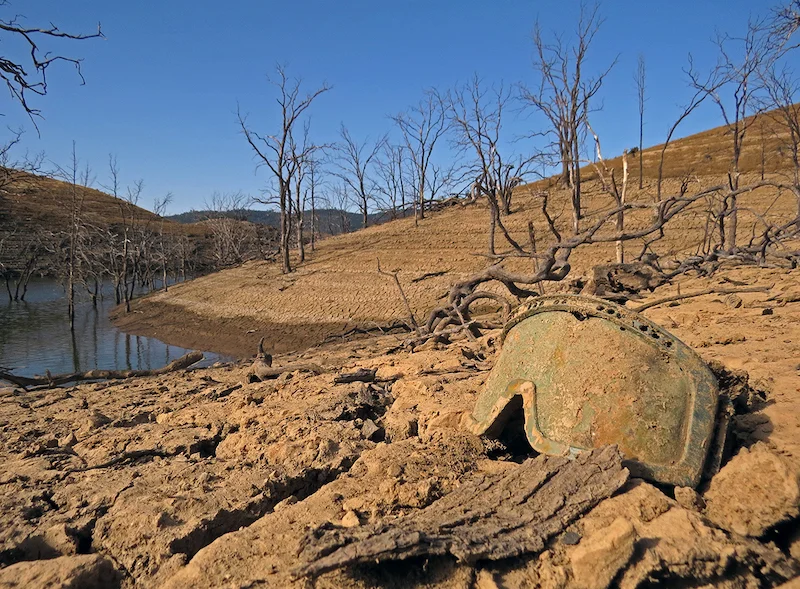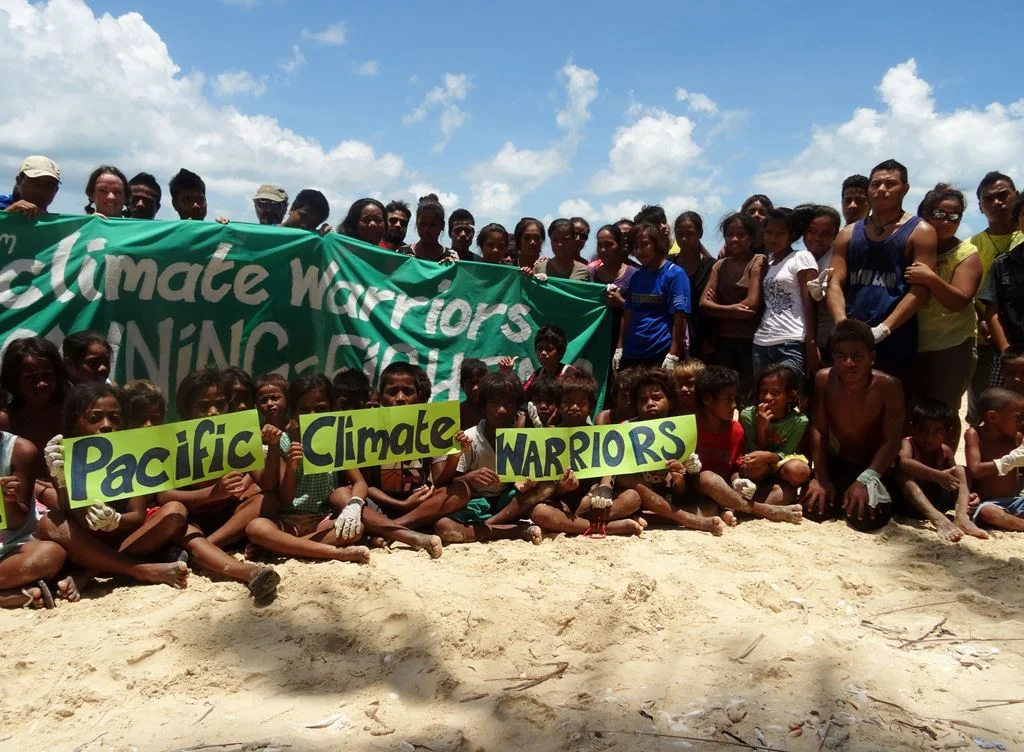Young climate activists involved in the #FridaysForFuture movement have been determined not to allow the worldwide coronavirus lockdowns curb their momentum.
The weekly school strikes sparked by Greta Thunberg to inspire action on the climate crisis have moved online — thousands have been involved in virtual events, and in raising awareness about climate change on social media using the #climatestrikeonline hashtag.
But climate activism didn't suddenly appear — although recent years have seen a huge breakthrough in capturing the attention of the world, the digital effort during the pandemic is just the latest innovation in a movement that has evolved over decades.
From the first utterance of the term "global warming" to environmental activism spilling out onto streets around the world, we've flicked through the history books to learn a bit more about the climate movement's past. Here's a brief look at some of the key moments that have brought us to where we are today.
1. The birth of 'global warming'
In 1965, scientists on the US President’s Science Advisory Committee first put forward concerns about a “greenhouse effect”.
In a report called "Restoring the Quality of Our Environment", the scientists proposed that increasing temperatures in the atmosphere was caused by a buildup of carbon dioxide. But it wasn’t until 1975 that the term “global warming” was coined by geoscientist Wallace Broecker — and it took years before the issue reached mainstream understanding.
 Judy Moody works in a poster-filled office of the Environment Teach-In, Inc., in Washington, April 9, 1970. The organization is coordinating school activities for the nationwide observance of Earth Day on April 22.
Judy Moody works in a poster-filled office of the Environment Teach-In, Inc., in Washington, April 9, 1970. The organization is coordinating school activities for the nationwide observance of Earth Day on April 22.
Judy Moody works in a poster-filled office of the Environment Teach-In, Inc., in Washington, April 9, 1970. The organization is coordinating school activities for the nationwide observance of Earth Day on April 22.
2. Earth Day
The first-ever Earth Day was held in the US almost exactly 50 years ago on April 22, 1970.
The organisers wanted to raise awareness of concerns such as pollution and toxic waste and were inspired by the anti-war movement led by students at the time, according to its website. Earth Day has now become a global event ever since 1990, when 200 million people in 141 countries joined forces to bring it to the world stage.
3. Heatwaves
By the late 1980s, droughts and record heat led to media coverage around the world, with the LA Times, for example, reporting in 1989 on British scientists' discovery that the previous year had been the hottest ever on record — and crucially, linked this rising heat level to "global warming."
The story was pertinent in California as the same year the California Energy Comission predicted that the droughts, heatwaves, and wildfires they had experienced were likely to hit the state with more frequency in the years to come.

4. The IPCC
In 1988, the UN launched its Intergovernmental Panel on Climate Change (IPCC). The expert panel was given the job of assessing the developing science on climate change and providing up-to-date information to governments. Importantly, the IPPC's reports are used as a reference point in international climate negotiations — a key part of the process of getting countries to agree the necessary steps to tacke the issue.
The launch of the IPCC was a big step towards getting countries to attempt to cooperate on how they dealt with the threat of global warming — and decades later in October 2018, it was the IPCC that reported the world only had 12 years left to limit climate catastrophe before its consequences became irreversible.
5. The Rio Earth Summit
The Rio Earth Summit — an international conference on sustainable development held by the UN in 1992 — established a set of principles for improving and protecting the environment adopted by 178 countries.
It was the first time that the issues of economy, climate, and international development were considered together, but the summit was not revisited for another 20 years — when Rio+20 was held in June 2012.
 Tucano, an indigenous group from the Amazon rainforest, dance at the opening ceremony of a world conference of native peoples, a week before the Earth Summit in Rio De Janeiro, Brazil, May 26, 1992.
Tucano, an indigenous group from the Amazon rainforest, dance at the opening ceremony of a world conference of native peoples, a week before the Earth Summit in Rio De Janeiro, Brazil, May 26, 1992.
Tucano, an indigenous group from the Amazon rainforest, dance at the opening ceremony of a world conference of native peoples, a week before the Earth Summit in Rio De Janeiro, Brazil, May 26, 1992.
6. The Kyoto Protocol
In 1997, developed nations gathered in Kyoto, Japan, to agree on a historic climate plan — it was the first agreement between nations to mandate the reduction of greenhouse gases.
The international treaty was called the Kyoto Protocol: a pledge for industrially-advanced countries to reduce emissions by an average of 5% by the period 2008-12, although there were wide variations on targets for individual countries. The US Senate immediately declared it would not ratify the treaty.
7. Demonstrations
In the 2000s, large-scale demonstrations calling for action on climate change became regular events.
Between 2000 and 2019, nine of the hottest years ever recorded took place, but fossil fuel consumption was still rising ever higher. It led to the founding of international pressure groups, such as 350.org — an organisation founded to build a global climate movement.
In 2005, the first Global Day of Action took place during the UN climate talks in Montreal — with people taking part in Canada and around the world, from Bangladesh to Australia. The demonstrations have continued every year.
 Some of thousands of people demonstrating on the the street in central Copenhagen, Denmark, Dec. 12, 2009.
Some of thousands of people demonstrating on the the street in central Copenhagen, Denmark, Dec. 12, 2009.
Some of thousands of people demonstrating on the the street in central Copenhagen, Denmark, Dec. 12, 2009.
8. Student pressure
In 2011, student groups in the US and later the UK and around the world began pressuring universities to divest from fossil fuels. It was the birth of an effective new focus for campaigners, and students slowly began to see some success.
By 2014, 837 institutions and individual investors had committed to divestment, although only 13 of these were US-based. That same year, the University of Glasgow became the first British university to divest.
A global movement, fronted by the non-profit network Fossil Free, signed up groups all over the world to pressure companies and institutions to divest, and by the end of 2019 had secured $11 trillion in divestment from fossil fuels. The movement continued to blossom and by the start of 2020, half of the UK’s 154 universities, for example, had committed to divestment from fossil fuels.
9. Rising sea levels
Pacific Islanders began to sound the alarm as rising sea levels threatened land and livelihoods. In 2014, their activism became more direct, as a group a known as the Pacific Climate Warriors from the Marshall Islands, Fiji, Vanuatu, Tokelau, and the Solomon Islands joined a flotilla blocking boats using the Newcastle coal port in Australia — to highlight the role of Australian coal exports in warming the planet and impacting their lives
Ahead of launching the boats, Koreti Tiomalu, an outreach coordinator for the activists, told 350.org why they were doing it: “For over 20 years Pacific Islanders have been negotiating with little effect with countries like Australia to cut their greenhouse gas emissions. This is a way for the warriors to stand up and say they are not drowning, they are fighting.”

10. Climate culture
During the 2010s, public performance art on climate change became a symbol of protest.
From giant hands pulling down buildings at the 2017 Venice Biennale, to ice sculptures melting outside London’s Tate Modern in 2018, art was fueling climate activism everywhere.
11. Direct action
Extinction Rebellion, a direct action group that organises creative forms of protest, launched in London in May 2018.
The group brought the UK capital to a standstill and began targeting events such as Fashion Week in order to further their mission. Chapters of the group have since opened in 68 countries around the world, from Russia to South Africa.
 A young Extinction Rebellion climate change protester holds a banner as they briefly block a road in central London, Wednesday, April 24, 2019.
A young Extinction Rebellion climate change protester holds a banner as they briefly block a road in central London, Wednesday, April 24, 2019.
A young Extinction Rebellion climate change protester holds a banner as they briefly block a road in central London, Wednesday, April 24, 2019. The non-violent protest group, Extinction Rebellion, is seeking negotiations with the government on its demand to make slowing climate change a top priority.
12. Greta Thunberg
In August 2018, then 15-year-old Greta Thunberg went on her first school strike, sitting alone outside the Swedish parliament to protest inaction on the climate crisis.
Thunberg urged leaders to take climate action seriously if they wanted children to study for their future. Her action sparked a global movement led by school students regularly striking on Fridays under the banner "Fridays for Future", while Thunberg went on to be nominated for a Nobel Peace Prize after her viral speeches to politicians around the world.
 Swedish climate activist Greta Thunberg, center, lifts her sign which reads 'school strike for the climate' as she attends the 'Friday For Future' rally in Berlin, Germany on March 29, 2019.
Swedish climate activist Greta Thunberg, center, lifts her sign which reads 'school strike for the climate' as she attends the 'Friday For Future' rally in Berlin, Germany on March 29, 2019.
Swedish climate activist Greta Thunberg, center, lifts her sign which reads 'school strike for the climate' as she attends the 'Friday For Future' rally in Berlin, Germany on March 29, 2019.
Now, in 2020, the climate movement has become global and digital. Studies throughout 2019 have shown that the climate crisis is moving up the agenda for voters in countries around the world — in some cases, like in the UK, making it into the top five issues facing the nation that the electorate cared about.
Greta Thunberg has been joined by the likes of Vanessa Nakate in Uganda, Aditya Mukarji in India, Alexandria Villaseñor in the US, and tens of thousands of others. These activists will continue to inspire political change and make their own history for years to come.
Join the movement by taking action here to help protect the environment, and mitigate the impacts of climate change on the world's most vulnerable people.

